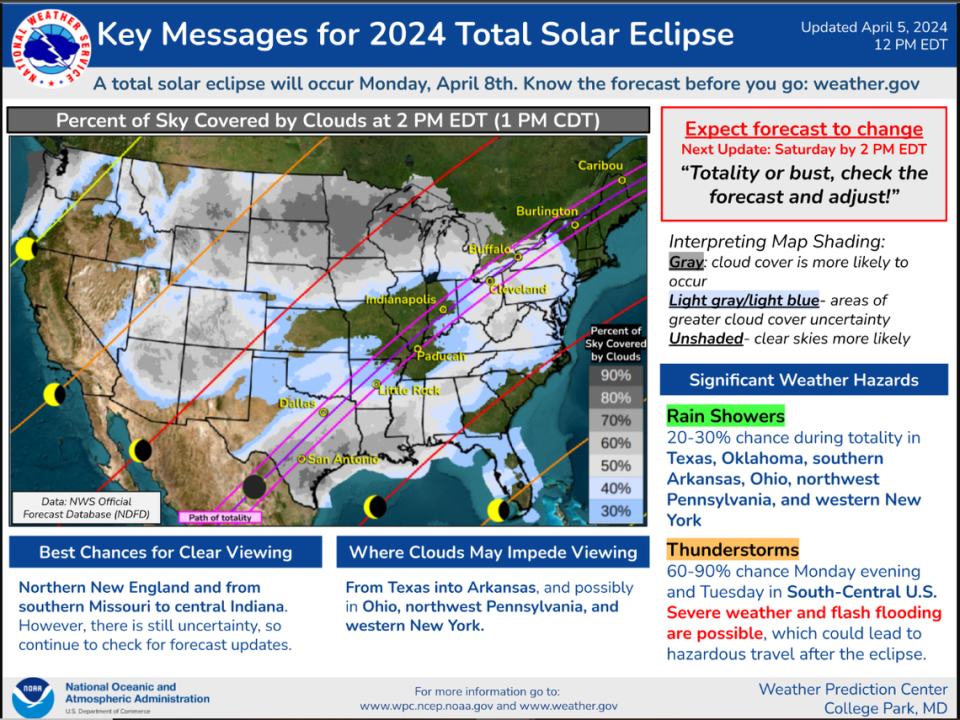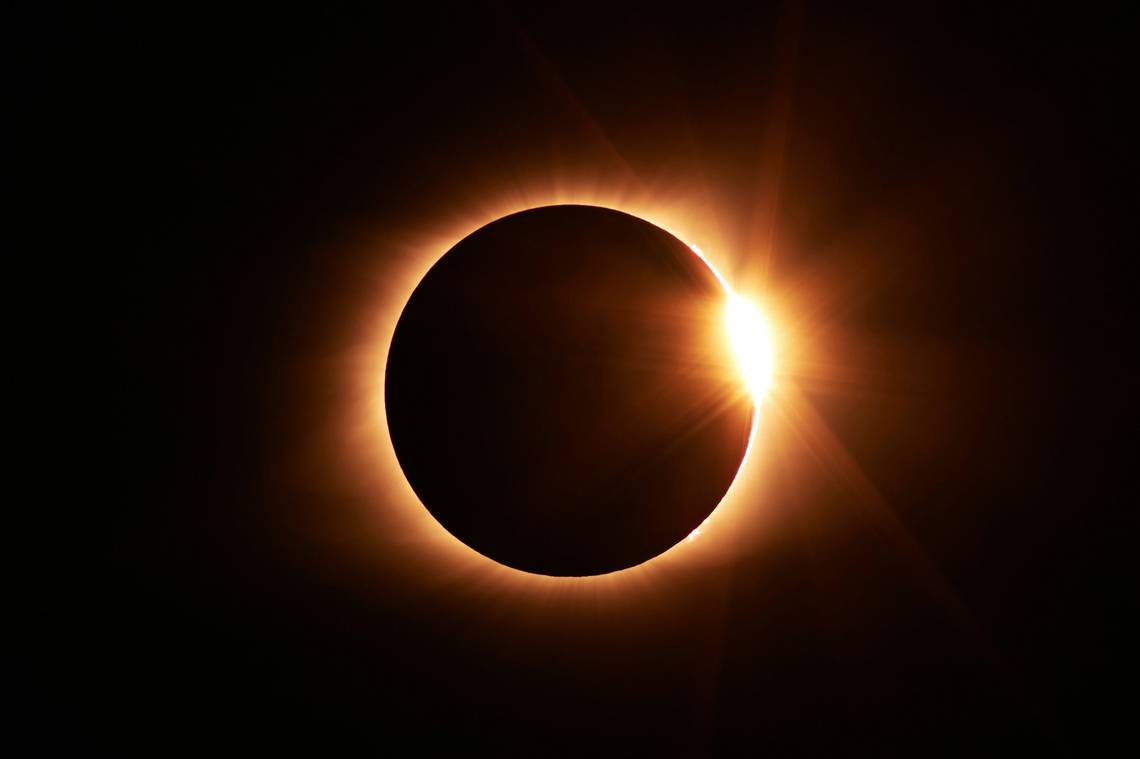According to NASA, the next total solar eclipse won’t be visible over the contiguous U.S. until 2044, so you don’t want to miss what’s been called the most spectacular event in nature that scientists can predict.
One element of uncertainty lingers, however. Namely, will Kentucky’s mercurial weather cooperate for this historic event? Here’s what to know about the forecast in Lexington and Kentucky more broadly April 8. Plus, a few reminders about safe viewing practices and when you can catch the eclipse.
What will the weather be like in KY for the April 8 solar eclipse?
In Lexington, the National Weather Service’s seven-day forecast calls for a chance of showers between 9 p.m. and 3 a.m. Sunday night, with possible thunderstorms during the early morning hours Monday.
That said, during the day Monday, the chance for showers and thunderstorms is small, and the skies above Lexington will be mostly sunny, according to the forecast, current as of Friday afternoon. There’s a diminishing chance of rain heading into Monday night.

Reached Thursday by phone, NWS meteorologist Dan McKemy told the Herald-Leader “the higher chances for rain would be early in the morning. The chances go down considerably by the afternoon.”
Still, there’s still a chance for a stray shower or lingering clouds in the afternoon in the Lexington area, McKemy said. The forecaster noted the entire eclipse, from early stages to its peak and conclusion, lasts a couple of hours.
“During that window, there could be clouds that block the sun occasionally,” McKemy said, adding “I wouldn’t say the whole entire show would be blocked by clouds.”
So while it may be a little cloudy in Lexington, what about the rest of Kentucky?
McKemy said cloudy conditions are more likely the further east you go in Kentucky, and a cloud cover outlook from the NWS Weather Prediction Center for April 8 seems to back that up. As of noon Friday, the center’s outlook indicates Western Kentucky has a good chance of clear skies, whereas Central and Eastern Kentucky could see 30 or 40% cloud cover, respectively.


Of course, Kentucky’s weather is famously fickle, so make sure to bookmark the weather service website on your phone to get the latest in-depth forecast for your area. You should also be mindful of wireless emergency alerts from the NWS sent to your phone via its carrier. No sign up is required for this service.
What time is the solar eclipse in Kentucky?
Exact eclipse times will vary based on your location in Kentucky, but the event will largely play out Monday afternoon between 12:45 and 4:30 p.m.
In Lexington, the eclipse will be a partial one, with about 96% of the sun’s face covered by the moon. The moon will begin taking a bite out of the sun at 1:51 pm Eastern Standard Time, reach its peak at 3:09 p.m. and conclude by 4:24 p.m., according to the eclipse simulator at eclipse2024.org.
For 15 other cities and towns across Kentucky, we’ve compiled a list of local eclipse times.
Tips for viewing the solar eclipse safely
In Lexington and most of the state, the solar eclipse will be a partial one. This means observers need to keep their eye protection on for the entire event. During a total solar eclipse, it’s only safe to remove your eclipse glasses or viewers during the brief phase of totality, when the moon completely blocks the sun.
Removing your eye protection outside of totality during a total solar eclipse or at any point during a partial one means risking damage to your eyes. During a solar eclipse, the wavelengths of light that normally trigger pain and prompt you to jerk your head away when you look at the sun are blocked. However, the wavelengths that damage your retina are not, meaning you could be burning your retinas without knowing it. That can result in vision loss or blindness.
Given this, you need a proper pair of eclipse glasses to safely participate in this awe-inspiring astronomical event.
Do you have a question about the environment in Kentucky for our service journalism team? Send us a message via email at ask@herald-leader.com or submit your story idea, question or comment using the Know Your Kentucky form below.
